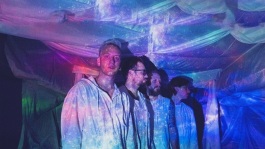Trending News|March 18, 2013 03:39 EDT
St. Patrick's Day Was Originally a Christian Celebration?
Saint Patrick's Day or the Feast of Saint Patrick (Irish: Lá Fhéile Pádraig, "the Day of the Festival of Patrick") is a cultural and religious holiday celebrated on 17 March. It is named after Saint Patrick (c. AD 385-461), the most commonly recognized of the patron saints of Ireland.
In the early seventeenth century, Saint Patrick's Day was made an official Christian feast day was is observed by the Catholic Church, the Anglican Communion (mostly in Ireland), the Eastern Orthodox Church and Lutheran Church.
The day acknowledged Saint Patrick and the arrival of Christianity in Ireland, also celebrated the heritage and culture of the Irish.
Celebrations normally involve public parades and festivals, céilithe, and the wearing of green attire and shamrocks are typically displayed. Christians would attend church services and the Lenten restrictions on eating and drinking alcohol are lifted for the day. This is what has widely promoted and propagated the holiday's tradition of drinking alcohol.
Saint Patrick's Day is a public holiday in the places of the Republic of Ireland, Northern Ireland, Newfoundland and Labrador and Montserrat.
Where did the wearing of green on St. Patrick's Day come from?
Saint Patrick was actually originally associated with the color blue. Over the years, the color green and its association with Saint Patrick's Day grew. As early as the 17th century, Green ribbons and shamrocks were worn to celebrate St Patrick's Day. The story goes that Saint Patrick used the shamrock, a three-leaved plant, to explain the Holy Trinity to the pagan Irish. Because of this, the people started wearing and using the shape of the shamrock and its green color to represent the day.
Saint Patrick's Day is not an official holiday in the United States but is celebrated most places across the country. America observes it as a celebration of Irish and American culture. St. Patrick's Day has been celebrated in North America since the late eighteenth century. Celebrations include prominent displays of the color green, eating and drinking, religious observances, and numerous parades.
What do you feel is the role of being a Christian and celebrating St. Patrick's Day in this generation?












